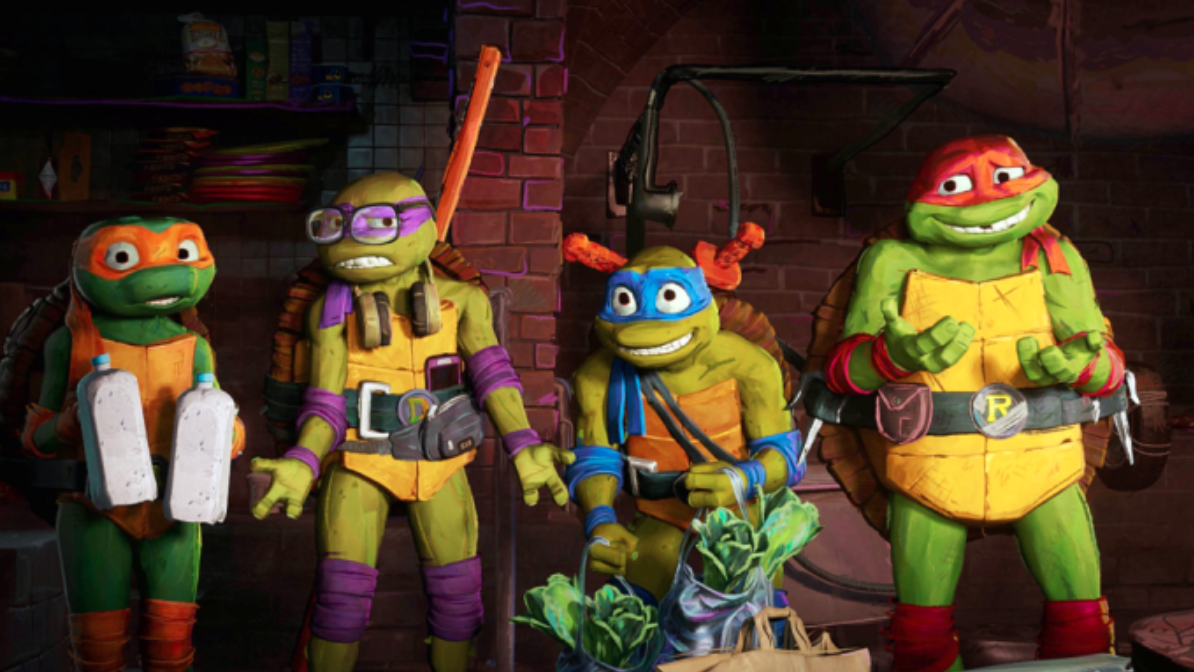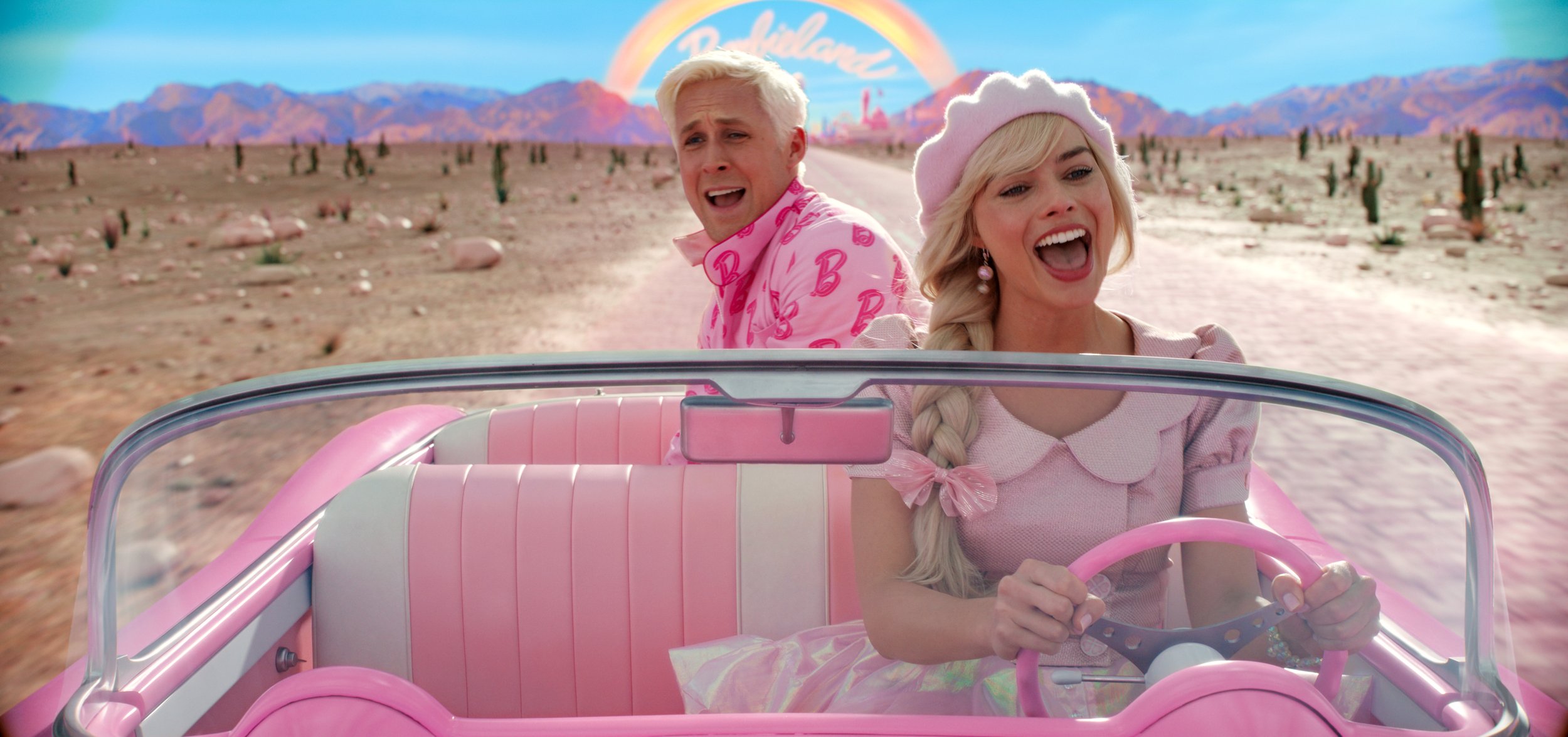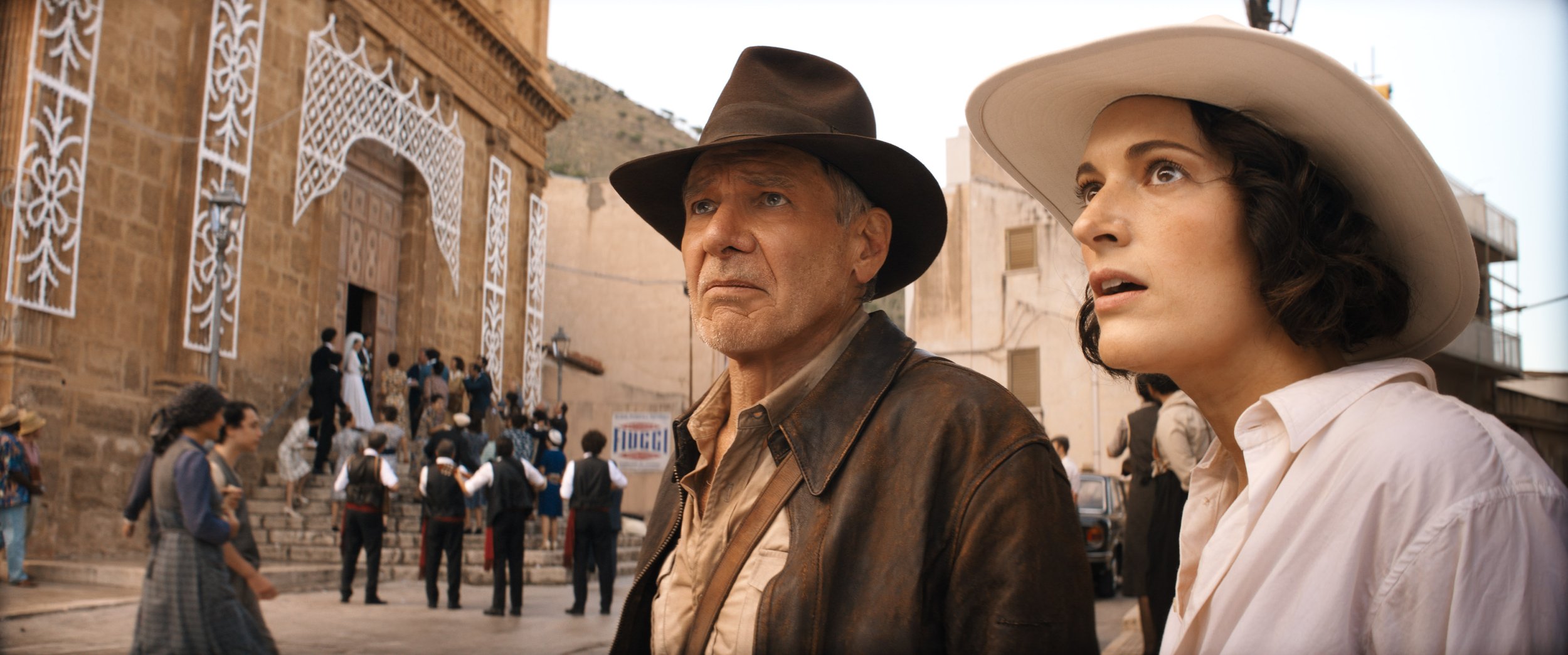Review: 'Teenage Mutant Ninja Turtles' reboots with 'Mutant Mayhem,' where the stunning animation outpaces a chaotic story
It’s fair to say “Teenage Mutant Ninja Turtles: Mutant Mayhem” is a matter of style over substance — but when you’ve got this much style going on, it’s difficult for the substance to keep up.
This animated tale is the latest attempt to make movies off of the cult-favorite comic book — by my count, this is the third movie reboot, after the movie series that started in 1990 and the one that started in 2014 (and that’s not counting all the TV cartoon versions). This one is different in that it’s not attempting to be live-action. This one is animated, in every sense of the word.
The animation is computer generated, but the turtles and other characters are largely made to look like stop-motion clay figures (think Wallace & Gromit), but with lines frequently added to give a sketchbook quality, like something out of a comic book. The effect is eye-popping, and easily the most visually arresting animation in a movie this year that doesn’t have “Spider-Verse” in the title.
The animation is so dynamic that the story, as frenetic as it is, can’t keep up. At heart, it’s the origin story of the Turtle family — how four baby turtles were washed down the sewer and covered in a mysterious ooze that gave them mutant superpowers. The ooze also affected a rat, named Splinter (voiced by Jackie Chan), who became the Turtles’ adopted father, protector and martial arts trainer.
As teens, the four — Leonardo (voiced by Nicolas Cantu), Donatello (voiced by Micah Abbey), Raphael (voiced by Brady Noon) and Michelangelo (voiced by Shamon Brown Jr.) — yearn to get out of the sewers and experience life as normal human teenagers. Splinter, however, forbids them from interacting with humans, and he has the flashback memories of threatening human behavior to bolster his suspicion.
Once, on a rooftop, they encounter April O’Neil (voiced by Ayo Edebiri, from “The Bear”), a high school student and aspiring journalist. After some initial trepidation, she befriends the foursome, and enlists them to help find the master criminal who’s been terrorizing New York — known only as Superfly.
The movie takes a drastic turn when the Turtles learn that Superfly is actually a fly — a mutant, like them, with a collection of other mutant creatures in his entourage. (The voice casting for these mutants is impressive, including Ice Cube as Superfly, plus John Cena, Seth Rogen, Rose Byrne, Paul Rudd, Natasia Demetriou, Hannibal Buress and Post Malone.) The Turtles also learn that Superfly’s heists are aimed at a larger goal: A device that will turn New York’s animal population into mutants who will dominate the city’s humans.
Director Jeff Rowe (who co-directed “The Mitchells vs. the Machines”) keeps the movie moving, even if the tag-teamed script — credited to five writers, including Rogen — gets bogged down in too many characters to follow and too much mayhem (as the title promises) to track.
Still, the action is brisk, and the animation shows Leo, Donnie, Ralph and Mike as genuine teenagers, even in their masked, shell-covered hero poses. (Casting actual teens to voice the roles was a smart move on the filmmakers’ part.) “Mutant Mayhem” launches this incarnation of the Turtles well, and will certainly spawn sequels to keep the story going.
——
‘Teenage Mutant Ninja Turtles: Mutant Mayhem’
★★★
Opens Wednesday, August 2, in theaters everywhere. Rated PG for sequences of violence and action, language and impolite material. Running time: 99 minutes.







